Nutanix CEO ‘Looking Forward’ To Outlasting Naysayers After Stock Drop
‘I think we’ve been naysayed for the last 10 years,’ says Nutanix CEO Dheeraj Pandey in an exclusive interview with CRN.
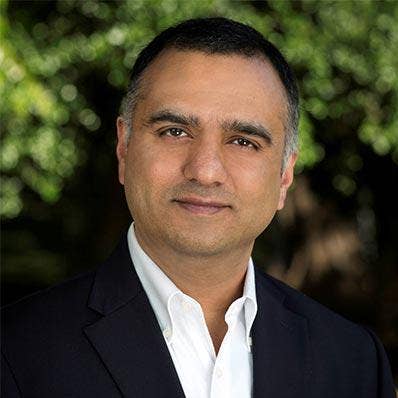
Nutanix Is ‘Looking Forward To The Challenge’
Nutanix CEO Dheeraj Pandey is “looking forward to the challenge” of proving critics wrong after the hyper-converged infrastructure pioneer reported a drop in revenue for its recent third fiscal quarter – sending the firm’s stock plummeting last week.
“I think we’ve been naysayed for the last ten years,” said Pandey in an interview with CRN. “Five, six years ago, these same competitors tried to actually become really hostile with us and tried to kill us. That’s when our AHV [hypervisor] was born.”
San Jose, Calif.-based Nutanix reported third quarter 2019 revenue of $287 million, slightly down from $289 million year over year. Software and support sales rose 17 percent year over year to $266 million. Nutanix’s stock dropped more than 16 percent following the company’s earnings report and has yet to rebound, currently trading around $27 per share.
Pandey said his company is fixing the softer-than-expected sales slump by rebuilding Nutanix’s pipeline by doubling down on lead generation and increasing focus on sales hiring, especially in the Americas. In an interview with CRN, Pandey talks about his company’s future, the resignation of Nutanix Chief Product and Development Officer Sunil Potti and his message to channel partners.

What hindered Nutanix growth in your third quarter?
We’re doing tougher things right now. When you go through tough things, the world either thinks you’re done or you actually get even more courage to go ahead in the world even further. Doing subscription is not easy. We decided to go through the transformation because when we come out of this on the other side, we’ll be company that can call itself a true cloud operating system software company where you can have both on-premise and off-premise in subscription. Some of these things are hard to predict. We decided to actually go through this and we want to hasten it. We are ahead of the curve in terms of the schedule of the transformation. We talked about some of the pipeline issues last quarter and we really come out well in terms of building the pipeline and we just have to execute on that over the next quarter or two.

What investments are you making to solve the declining sales numbers and stock drop?
I believe we were basically flat [in sales year over year. On sales hiring, obviously, a lot of focus is going on in there. And this quarter, we’ve had net adds of over 50 sales reps, which is a big improvement from the prior quarter. So there continues to be a lot of focus on that and we would expect that to continue to improve going forward here. These changes take a couple of quarters to show results because we built the pipeline [but it] doesn't mean we can actually go and spend it this quarter itself. We'll be watchful and conservative in the near-term, as we give the new Americas sales leadership time to effect change as we understand the top line impact of even higher subscription. Much needs to be done in the coming quarters as we flush through our pipeline and sales execution issues and leverage the new subscription model to improve predictability and sales leverage.

Talk about the upcoming departure of Sunil Potti and who will replace him?
The company is 10 years old and Sunil was here for four of those 10. So obviously Sunil has been part of that innovation base. He’s a great team player and is a very emotionally intelligent leader. We’ve brought up other leaders along the way. Our COO David Sangster was doing a portion of engineering because we have a pretty substantial engineering force. We have our CTO Rajiv Mirani who is equally as deep [into our technology], who has been there for six-plus years. We have two of our senior VPs of engineering who all want to jump in and take this company into the next five, ten years of innovation. We have a very good bench. Executives move on for various reasons of their own. Sunil is going to Google. We have another executive of Google [Brian Stevens, VP and CTO of Google Cloud] joining our board of directors. So maybe this could be a good exchange of talent both ways.
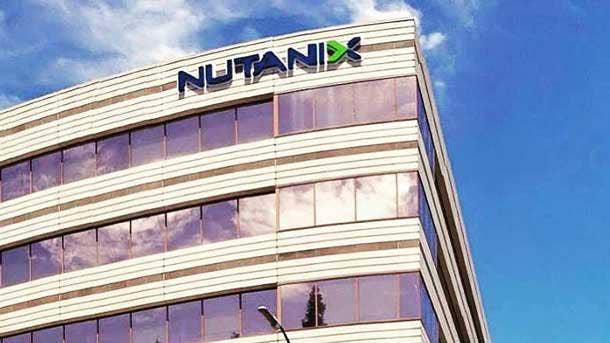
What’s your message to the naysayers who don’t think Nutanix will be successful in the future?
I think we’ve been naysaid for the last ten years. Five, six years ago, these same competitors tried to actually become really hostile with us and tried to kill us. That’s when our AHV [hypervisor] was born, our idea of virtualization software and us taking over our destiny. That’s how this company has always operated. When the going gets tough, is when this company really gets going. So we are looking forward to the challenge. … Companies that really became way bigger over time in terms of enterprise value, they are the ones that actually swallowed the tougher pill of subscription and the transformation to subscription. … Our transition to subscription is ahead of schedule. Our field execution is improving with lead generation and pipeline build and improving sales hiring.
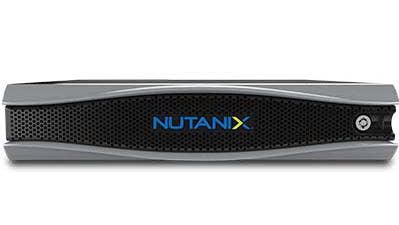
What is your view of the hyper-converged infrastructure market right now with you and Dell-VMware leading?
The market is actually changing to software. It’s really about the operating system as opposed to being about hardware. We want to be able to run [Nutanix] in every server. We ran it from our own appliances, now we’re running it on every other server vendor out there as well. We recently signed a partnership with HPE. So the surface area of hyper-convergence is growing as we make it into a pure software play. Then it grows even further as you put it into the cloud. All of the sudden we will end up hyper-converging not just infrastructure on-premise, but also hyper-converging clouds. That’s really the first incarnation of hybrid cloud with hyper-convergence software itself. If you think about anybody who has a pure hardware play, they’re probably finding it really hard. Software players are actually going to be able to make it. There’s two right now: VMware and Nutanix.
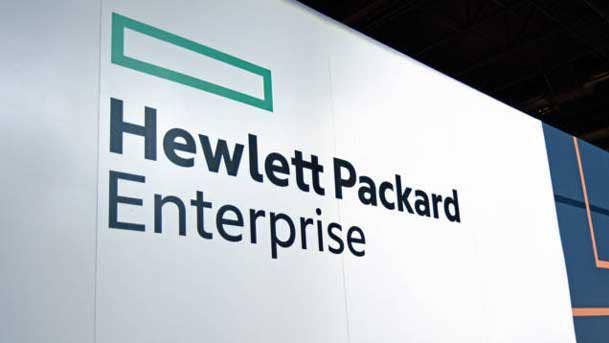
How important is the new HPE partnership for Nutanix?
The game plan is that we go with HPE’s partners and focus on some of the commercial segment itself. In the Americas, I think we have a pretty good foothold and a very, very good opportunity with the large enterprises because that's where most of the ‘good enough’ doesn't work in terms of products and customer support and such. But we definitely feel like partnerships like HPE will help us with the mid-market. And we’ve continued to do really well with some of our channel partners; CDW, SHI, Sirius [Computer Solutions] and all these partners have done pretty well for us who want to double down on that as well. … HP has been a very good optionality for us as well. There's some really good large customer discussions and openings of conversations that we never saw before is going on. I think, we are opening up our optionality with Fujitsu, Lenovo, all these other several vendors. … It's early, but there is enthusiasm because HPE channel partners are actually looking for a solution, as they compete more with Dell as well. So in that sense, even in very large accounts where we sometimes have to go direct, we'd rather go through HPE as well and we're seeing some of that activity as we speak.
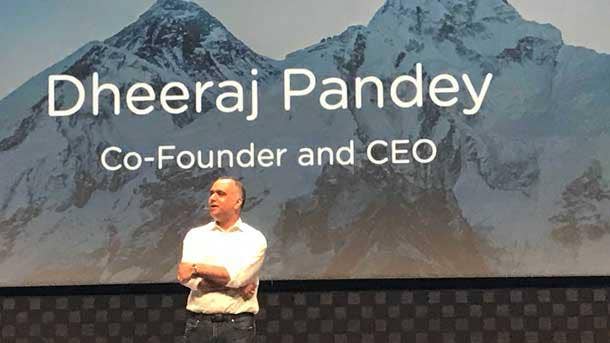
How successful was your recent Nutanix .NEXT conference?
It was the largest in our four or five years that we have done it. We had a large amount of people on the live webcast, almost 54,000 registrations. Annually, we take .NEXT to various cities, close to 50 different cities. Just last year it was 26,000 people [who attended overall]. That’s when channel partners and customers come in to learn from each other. We talked a lot about new products there. This year was no different from the previous years, except it was the largest of them all. We had some really good product innovation and we talked about Nutanix Mine which is around integrated with backup vendors. We talked about Xi Clusters which is really about putting Nutanix software on the Amazon data centers. We talked about hybrid cloud, which is, how do you use Desktop As-A-Service in conjunction with your on-premise infrastructure so that you can really have a hybrid Desktop As-A-Service offering. All these things are really relevant to the channel partners because they want to really figure out what does it mean to really backup software, and what does it mean to integrate with hyper-converged infrastructure. They want to figure out hybrid cloud offerings like Desktop As-A-Service and finally, they want to go learn about what the Amazon cloud really looks like with Nutanix’s common and control plane called Prism.

What is your message to channel partners?
Channel partners really have to get into the cloud and they have to get deeper into subscription and think hard about hybrid cloud. If we don’t do this, it’s going to be really hard for the channel to transform itself. We provide one of the best offerings out there where they can make money both on on-premise sites as well as off-site. Between core essentials and enterprise, we’re now going to make a lot of our product uniformed in terms of subscription being the partner currency across all of them. The channel has to transform itself when you think hard about subscriptions: 1-year, 3-year, 5-year terms and monthly terms. We have to talk about not just keep selling more and more hardware and capex-based infrastructure.